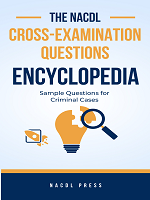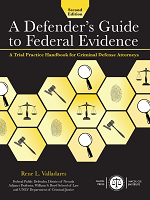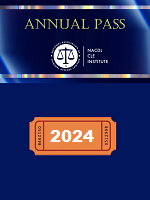WHEREAS NACDL’s mission is to identify and reform flaws and inequities in the criminal legal system, redress systemic racism, and promote the core values of America’s justice system guaranteed by the Constitution;
WHEREAS facial recognition technology can be used to conduct remote, secret, biometric surveillance on a mass scale;
WHEREAS NACDL has previously supported a ban on the real time use of biometric surveillance in conjunction with body cameras;
WHEREAS the scientific validity of facial recognition as used in criminal investigations has never been established, despite being used in hundreds of thousands of investigations since 2001;
WHEREAS no nationwide standards, controls, or safeguards exist to protect law enforcement facial recognition searches from misidentifications, poor quality or biased algorithms, contamination based on task irrelevant data, or other cognitive biases;
WHEREAS facial recognition has been used as the sole or primary identification evidence against the criminally accused, but is rarely turned over to the defense as part of discovery or Brady disclosure;
WHEREAS studies continue to show that facial recognition algorithms perform differently depending on the race, sex, and age of the subject of the search, placing certain individuals at a higher risk of misidentification because of their demographics;
WHEREAS facial recognition technology will disproportionately be used on Black, Brown and poor communities and individuals who have historically been subject to over policing and race-based policing;
WHEREAS law enforcement facial recognition searches have led to the misidentification and wrongful arrest of at least six people within a four-year timeframe, all of whom are Black;
Therefore, BE IT RESOLVED that NACDL opposes the use of facial recognition technology as a police investigative tool, and believes that facial recognition should never be used for remote biometric surveillance including but not limited to in conjunction with body camera devices;
Understanding that facial recognition is already used by numerous law enforcement agencies, BE IT FURTHER RESOLVED that NACDL calls on agencies using the technology to implement absolute protections against the harms perpetuated by the use of the technology, including but not limited to:
- Guarantees that facial recognition programs do not produce demographically-based disparate impacts or results, including in the confidence intervals, scores associated with possible matches, and in broader policing practices;
- Externally validated studies to determine error rates of both the machine and human components of a facial recognition search, including false positive and false negative error rates;
- The elimination of task irrelevant information and cognitive biases from the facial recognition search process;
- The elimination of the use of PhotoShop or other editing tools in the facial recognition search process, particularly at the preprocessing stage; and
- Scientifically validated training and routine, transparent, externally-administered performance evaluations for analysts responsible for conducting facial recognition searches;
BE IT FURTHER RESOLVED that NACDL calls on agencies to implement an absolute prohibition on the use of facial recognition technology as the sole piece of identification evidence prior to an adverse action taken against an accused;
BE IT FURTHER RESOLVED that NACDL calls on the government to disclose comprehensive details on the facial recognition technology search process in every case in which it is used, irrespective of any additional investigative steps taken to verify or refute the results of the facial recognition search process;
BE IT FURTHER RESOLVED that NACDL additionally calls on the government only to contract with or otherwise use the products of facial recognition algorithm providers that make their algorithm source code, training data, and system parameters available for external validation and disclosure to the defense, and do not otherwise assert or claim the “trade secret privilege”;
BE IT FURTHER RESOLVED that NACDL additionally calls on the government to refrain from introducing facial recognition as evidence in court unless and until the foundational validity of the method as it is used in investigations, including both the human and machine components of a search, has been established to a degree that comports with the Frye and Daubert evidentiary standards.
BE IT FURTHER RESOLVED that nothing in this resolution should be construed or used as principles for implementing facial recognition technologies. Rather, they are mitigation efforts intended to ensure the most transparency and equity for people ensnared by these technologies, and to give defense attorneys the notice and transparency they need to defend their clients.







